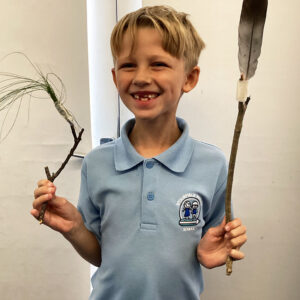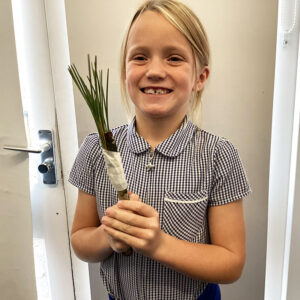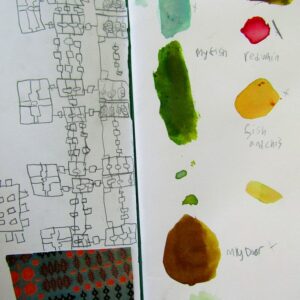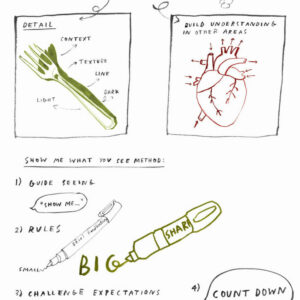Exploring the Brushwork of Van Gogh and Cezanne
If we zoom in and look closely at the brushwork of both Cezanne and Van Gogh you’ll see how they applied paint using fluid loose marks with complex colours, and yet when you stand back, the brush marks and the colours find their place to help tell the story of the painting.
In this resource we have zoomed in on sections of paintings to help pupils see the kinds of marks made by the painters.
Use the questions at the end to help guide an exploration.
Top: Detail: Wheat Field with Cypresses (1889) by Vincent Van Gogh. Original from the MET Museum.
Top: Detail: Three Apples (Deux pommes et demie) (ca. 1878–1879) by Paul Cézanne. Original from Original from Barnes Foundation.
Top: Detail: Houses and Figure (1890) by Vincent Van Gogh. Original from the Barnes Foundation.
Top: Detail: Houses in Provence: The Riaux Valley near LEstaque (ca. 1883) by Paul Cézanne.
Top: Detail: The Bedroom (1889) by Vincent Van Gogh.
Questions to Ask Children
“Impasto” describes paint when it is applied so thickly onto the canvas that it remains raised. Can you see areas of impasto in the paintings above?
Can you find an area of a painting where the artist has let the colour of the canvas show through?
Can you find examples of where the artist hasn’t mixed the colour on a palette – instead he has applied wet paint of one colour over wet paint of another colour and you can see where it mixes on the canvas?
Think about direction of brush strokes – can you find an area of canvas where the brush strokes go a particular direction? How do the artists’ change the direction of the brush strokes according to the subject matter of what they are painting?
How would you describe some of the brush strokes? Restful? Busy? Rhythmical? Chaotic?
Can you see areas of the paintings where the artist uses outlines? Doesn’t use outlines?
How many different colours can you spot in a particular area of canvas? Do you think the artist gives those colours names?
What kinds of tools or brushes do you think the artist might have used?
















